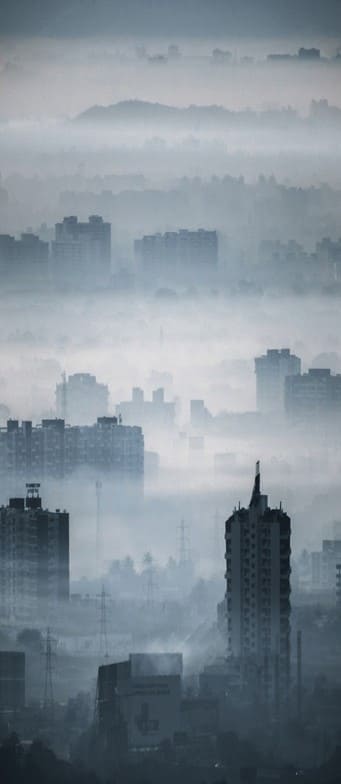
Delhi, India’s capital, has become the hub of India’s highly polluted cities. Delhi has faced issues such as excess population, developing infrastructure, increasing number of private transports, and industries. The stubble burning is also blamed for the depleting air quality in the capital city, which adversely affects people’s health. Post-celebration of Diwali, the pollution level in Delhi has increased. The air pollution reached the extent that the Delhi government had to shower water on the roads to control the smog (a mixture of smoke and fog). What are the major factors responsible for pollution? One of the major causes of high pollution is the release of harmful pollutants from the industries, emission of carbon monoxide from vehicles, stubble burning the farmers in the neighboring states of Delhi, and of course, use of fire crackrs during festivals. The Air Quality Index (AQI) is the air quality indicator. As the value of AQI rises, the health risks increase. For the AQI range 0-50, air quality is recognized as satisfactory. AQI in the range 51-100 is considered moderate. According to various research, people can suffer from lung problems, such as asthma, bronchitis, and cancer, even for this level. For the range 101-150, the air quality is unhealthy for the sensitive group of people who already suffer from health issues such as dry cough, wheeze, breathlessness chest discomfort. If AQI in the range 151-200 indicates unhealthy air and 201-300 is very unhealthy. The range 301-500 is considered hazardous. Delhi’s AQI was in the severe zone for seven days between 20 October 2021 and 14 November 2021. Doctors said they have been getting more patients with respiratory conditions such as asthma, respiratory infections, heart attacks, and stroke. People like the traffic police, street vendors, and delivery personnel who have very high levels of exposure are facing the highest risk from air pollution. High levels of pollution have also been linked to premature births and deaths due to pneumonia in children. Many studies revealed that 84.5 percent of people were suffering from health problems due to the increased incidence of smog. It was found that 76.8 percent of people reported irritation in the eyes, 44.8 percent reported irritation in the nose, and 45.5 percent reported irritation in the throat. Those who already have a history of respiratory conditions are advised to stay indoors as possible. Patients with severe asthma or Chronic obstructive pulmonary disease (COPD ) are advised to use air purifiers. According to doctors, the high pollution levels can be bad news for those who have recently recovered from Covid-19. A large proportion of people have post-pneumonic pulmonary fibrosis and long Covid-19. They are more likely to get cough, breathlessness, chest discomfort, lung infection, just like those with other chronic respiratory conditions when the pollution levels shoot up. With air pollution in Delhi reaching new peaks, there is an urgent need to adopt unconventional and unpopular measures that tackle the causes of air pollution and benefit all city residents
10 Jan 2022
Mayura Ghate